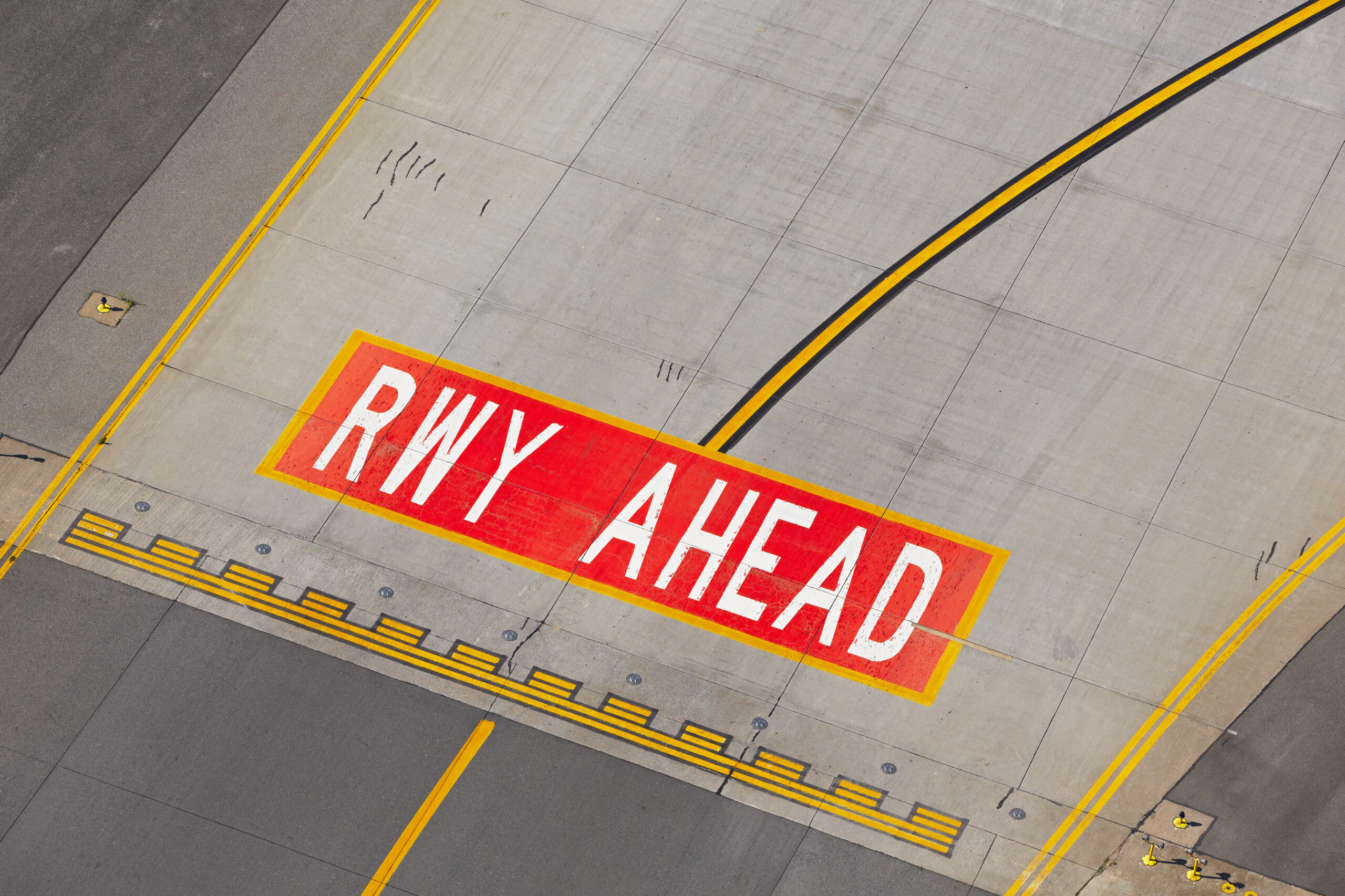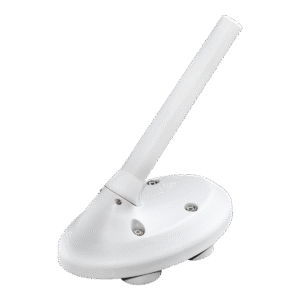Reducing Runway Incursions Isn’t a $100M Problem. It’s Much Less

Christian Ramsey, Managing Director Aviation Networks
This week, the FAA announced it has awarded more than $100M to 12 airports across the country to reduce runway incursions. Funding ranges from $223K to the single runway Waverly Municipal Airport (C25) to $6M to Miami International Airport (MIA).
The announcement comes at an interesting time for two reasons – first is simply the timing related to the run up the FAA’s Reauthorization which is expected to be achieved by the end of the Fiscal Year 2023, and secondly, the recently launched FAA independent Safety Review Team established by Acting Administrator Billy Nolan following a Safety Summit in March. These recent events were triggered by a series of high-profile “near-miss incidents” at airports which gained national media attention occurring in the last quarter of 2022 through the first quarter of 2023.
When researching these incidents, 3 of them (that I was able to find) involved a near-miss between an aircraft and an airport vehicle on the runway, and a 4th involved an actual collision. Here’s a quick summary of those incidents.
Jan 25, 2023 – A Delta Boeing 717 was cleared to land at Dade County Regional Airport (MSN) on a runway that was actively being worked by snow removal crews. The aircraft executed a missed approach and overflew the runway.
Jan 25, 2023 (same day!) – A SkyWest CRJ was cleared to land at South Bend International Airport (SBN) on a runway that was actively being worked by personnel and vehicles. The aircraft executed a missed approach and overflew the runway.
Feb 14, 2023 – An American Airlines Boeing 777 was cleared to land on a runway where a vehicle was conducting a runway inspection.
And the scariest example, which did not occur in the U.S. – Nov 18, 2022 Lima Peru, an Airbus A320 collided with a firetruck on the runway during its takeoff roll, killing 2 firefighters. The toll could have been much worse. The event was captured on video.

When I reviewed the list of projects approved and funded, 2 thoughts immediately struck me:
- The FAA funded projects at all sizes of airports, not just the big ones. This is a recognition that runway incursions are a problem at every airport regardless of size.
- These are all construction projects that would do nothing to alleviate the risks highlighted in the four incidents above.
Regarding #2, I understand that airport design is critical to traffic flow and strategic deconfliction on the airport surface, and I understand the heavy metal (or heavy concrete) approach is necessary to address this, but I also contend that lower-cost solutions are available that would reduce risk, address the challenges with airport vehicles specifically, and cost much, much less than a single linear meter of taxiway. So, what is it?
ADS-B OUT for Airport Vehicles
SHOCKER right? uAvionix advocating for ADS-B to solve airspace (now airfield) confliction issues. Where did that one come from? Look I get it, it’s a bit self-serving, but we do have a mission here at uAvionix to make the airspace (including on the surface) safer, and one of the best ways to do that is to create a cooperative environment that allows all participants to see one another, and ADS-B is the best, and standard way to do that. I didn’t make that up, the FAA did, and it’s been confirmed by raw data.
Why not take a lesson from the air? In 2019, even before the ADS-B mandate deadline was reached, the Aircraft Owners and Pilots Association (AOPA) published a report by the Regulus Group which found that the risk of an accident was reduced by 53% for aircraft equipped with ADS-B OUT, and a whopping 89% reduction in the likelihood of a fatal accident for aircraft using ADS-B IN!
As a result of the mandate, studies like this, and good common sense means that MOST aircraft are now equipped with ADS-B OUT and even more have ADS-B in capabilities thanks to devices like the ForeFlight Sentry (shameless plug – a uAvionix product) and Electronic Flight Bag (EFB) apps like ForeFlight Mobile. It is almost certain that ubiquitous usage of ADS-B OUT systems in airport movement areas (runways and taxiways) could achieve meaningful reduction in near-misses simply by making aware of one another.

The Product – VTU-20
In the U.S. the FAA regulates heavily ADS-B OUT devices (understandably). For aircraft equipment, this is accomplished via certification called a Technical Standard Order (TSO). While TSOs don’t apply to ground vehicles, a very similar qualification process is required. Advisory Circular (AC) 150/5220-26 provides a description of the process as well as includes an Appendix of qualified units and vendors, of which the uAvionix VTU-20 is one. The AC also “strongly encourages airport operators to voluntarily equip appropriate vehicles with airport ground vehicle ADS-B”. Consequently, over 30 airports have already equipped over 2000 vehicles with ADS-B OUT systems. However, the locations that have adopted this technology have been mostly limited to airports with surface detection equipment used by air traffic controllers. The FAA further explained in Advisory Circular 150/5220-26 that:
“While ATC surveillance benefits are only applicable to airports that currently have ASDE-X or ASSC, airport ground vehicle squitter units may be deployed at any airport. These airports could still derive benefit from airport ground vehicle squitter units through ADS-B cockpit applications and through airport operator displays.”
The product itself is pretty simple. It’s an all-in-one package that contains a certified GPS, ADS-B transmitter, and antenna. It mounts to the vehicle either through bolting it on or with some very strong magnets. Inside the vehicle is an on/off switch and some status lights. Not a lot of bells and whistles. The point here is that it is easy and extremely inexpensive in aviation dollars, and a fleet of 10 vehicles at an airport can be equipped for a monthly operational cost that usually falls within credit card budgets.

How does it help?
The VTU-20 simply allows the airport vehicle to be seen by anyone with ADS-B IN capability. The first two incidents above were likely complicated by low visibility snowy conditions – that is not a problem when you are electronically conspicuous.
ADS-B receivers are relatively inexpensive these days, and are extremely effective due to the high percentage of the aircraft population that are equipped. Portable ADS-B receivers range from about $100-$1000 depending on the brand and feature set.
Market intelligence from our own customers and competitors show that over 150,000 aircraft in the US alone are ADS-B IN equipped and likely fly with an EFB capable of alerting the pilot to suitably equipped vehicles on the runway. All those aircraft would immediately benefit from vehicle ADS-B to prevent runway incursions with other aircraft as well as vehicles. This could have significant and immediate safety at all airports in the US, not just those with ground surveillance capabilities.
See the image below captured from ForeFlight during a VTU-20 test.

A slight diversion but ADS-B OUT has become so ubiquitous that use of an ADS-B IN receiver is standard among drone operators for Detect and Avoid (DAA) capabilities and a requirement from the FAA on Beyond Visual Line of Sight (BVLOS) waivers.
Unfortunately, a large portion of the public use airports in the US, still lack low-altitude ADS-B coverage for traffic control, even at towered airports. These systems are often many times more expensive than the vehicle equipment. Increasingly lower cost dual mode ADS-B receivers such as the pingStation3 are available non-ATC use at airports. These types of devices can deliver high-integrity data at a fraction of the costs of ATC grade devices, which can significantly enhance safety, especially when integrated with situational awareness tools and automated incursion warnings, often used by airport managers, FBOs and other airport operators.

The point here is that we are creating a cooperative environment that allows SEE and BE SEEN capability between aircraft and ground vehicles without ATC in-between. Will it solve every issue being looked at by the Safety Team? No, will it help at a very affordable cost? Absolutely.
FAA Safety Team and Reauthorization Considerations
So, here’s a set of recommendations for consideration.
- Ground Vehicle Mandates and Funding- The FAA has mandated aircraft within certain airspaces must have ADS-B OUT. Follow this up with a mandate for the vehicles which operate in the movement areas within these same airspaces. By not equipping, they are actively contributing to the problem. Provide grant funding via AIP, Bipartisan Infrastructure Law, or rebates like previously done for pilots who had to equip before 2020. The cost of equipping all movement area airport vehicles at Class B and C airports in the U.S. would be less than the cost of a single accident.
- Lead by example –equip FAA vehicles at all airports. Our experience has shown that once an airport is exposed the benefits of an ADS-B-equipped vehicle on the airport surface, they will equip more vehicles.
- Think of the smaller airports starting with Class D airports – so much focus on airport surface safety is focused on the largest airports with surface surveillance systems like ASDE-X or ASSC equipment. Recognize shared situational awareness benefits extend to airports of any size. Particularly Class D airports can benefit if this recommendation is paired with #5 below.
- Promote and communicate the benefits and safety message. It is amazing how many airports don’t even know this capability exists and the FAA has invested in it. Get the word out loud and often.
- Develop a performance-based approach to allowing lower-cost ADS-B surveillance sensors to be used in situational awareness applications in the contract tower program, smaller towers as well as a broad range of safety tools being used to prevent runway excursions. A rapid expansion of surface surveillance and low-altitude surveillance at all public-use airports, coupled with transponders on aircraft and vehicles will make a significant contribution to reduced risk.
Wrapping Up
I recognize the title of this article is a bit flippant and clickbaity. There are hard and expensive problems to solve when it comes to airport layouts and taxiway improvements and I don’t mean to discount that. The FAA invested time, energy, and money into conceptualizing, defining, and qualifying vehicle ADS-B solutions to help alleviate this very problem and it simply feels like there hasn’t been much follow through with the exception of the focus on 44 of the nearly 20,000 airports in the country. The good news is that the FAA and industry recognize there is a problem. Systems like the VTU-20 are one of many tools that can be used to address it, and at probably the lowest cost of all of the alternatives.


